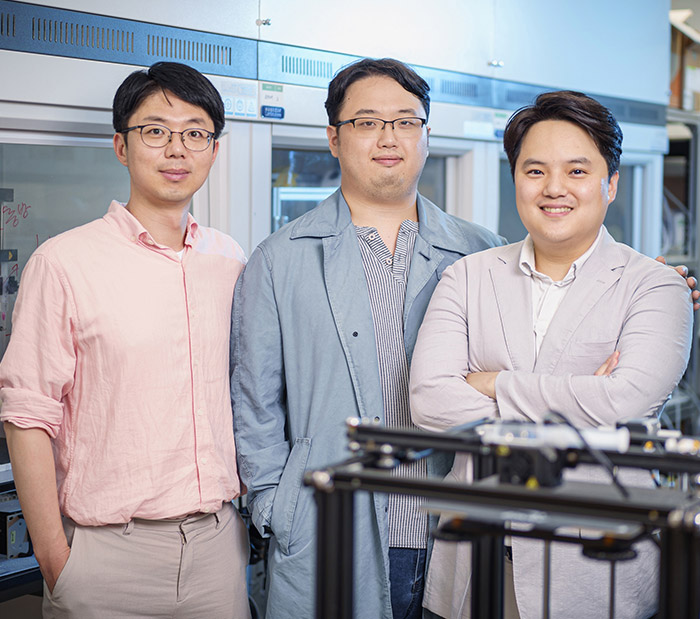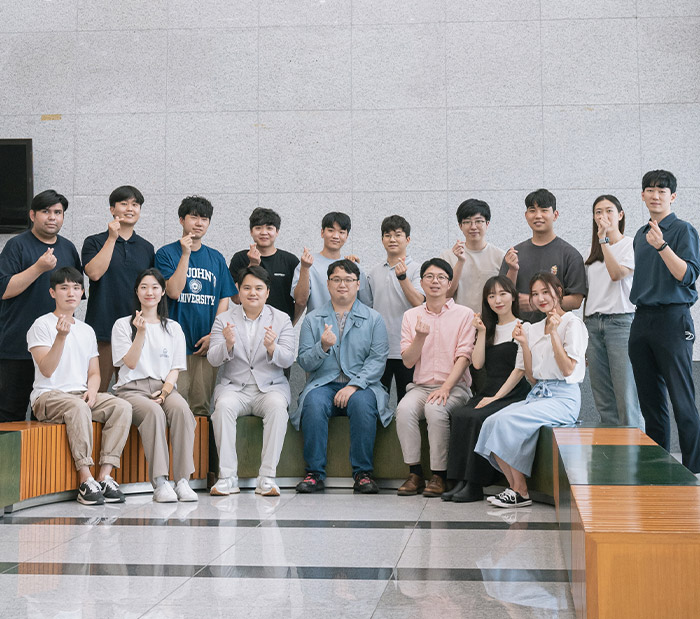Research Stories
Research Regarding Eco-Friendly Wood-TENG Composed of Mechanically Durable and Biocompatible Nanofibers
Prof. An's team have developed a environmentally friendly wood-derived triboelectric nanogenerator (wood-TENG) composed of mechanically durable and biocompatible nanofibers.
SKKU Advanced Institute of Nano Technology
Prof.
AN, SEONGPIL
Prof. Ki Hyun Kim, Ph.D. Dogun Park, Ph.D. Joo-Hyun Hong
A research collaboration team led by Prof. Seongpil An (co-first author: Dogun Park) and Prof. Ki Hyun Kim (co-first author: Joo-Hyun Hong) reported that they have developed a environmentally friendly wood-derived triboelectric nanogenerator (wood-TENG) composed of mechanically durable and biocompatible nanofibers.
TENGs have attracted great attention because they can harness ubiquitous kinetic energies, such as vibration, friction, and impact, originated from unlimited natural resources. Not only this eco-friendly working principle, but the TENGs are also cost effective and can show high efficiency even at low operation frequency (meaning that they can harness human kinetic motions). On the other hand, in order to use these TENGs as a power source for next-generation self-powered wearable electronic devices, there are two important requirements should be considered when one fabricates TENGs.
First, to harness human kinetic motion most efficiently, a geometrical structure of TENG should be efficiently designed, considering various human motions, such as bending at joints, and friction and impact during walk or running. Second, materials used for TENGs should be biocompatible, non-toxic, and skin-friendly so that they can be attached to human skin.
[Figure 1] Schematic of the fabrication process and application of the wood-TENG developed.
Considering these issues the research team has developed and employed the electrospun nanofibers composed of nature-derived biomaterials, in which a nontoxic biopolymer (i.e., polycaprolactone) and wood-derived extract (i.e., the root bark of Ulmus davidiana var. japonica) were included, as a tribopostive material. The wood-TENG based on these nature-derived biomaterials could generate a maximum output voltage of 80 V and also show stable cyclic energy harvesting performance during 100,000 cycles. In particular, the insole that consisted of the wood-TENG was able to generate electrical energy when one was walking and running along with showing antifungal activity against fungi existing in the foot.
This research result was reported in Nano Energy (IF=19.069) at June 2022.


